Found the the time to recap the preamp for the Yamaha RA-100 published in an earlier post. Pictures before and after.
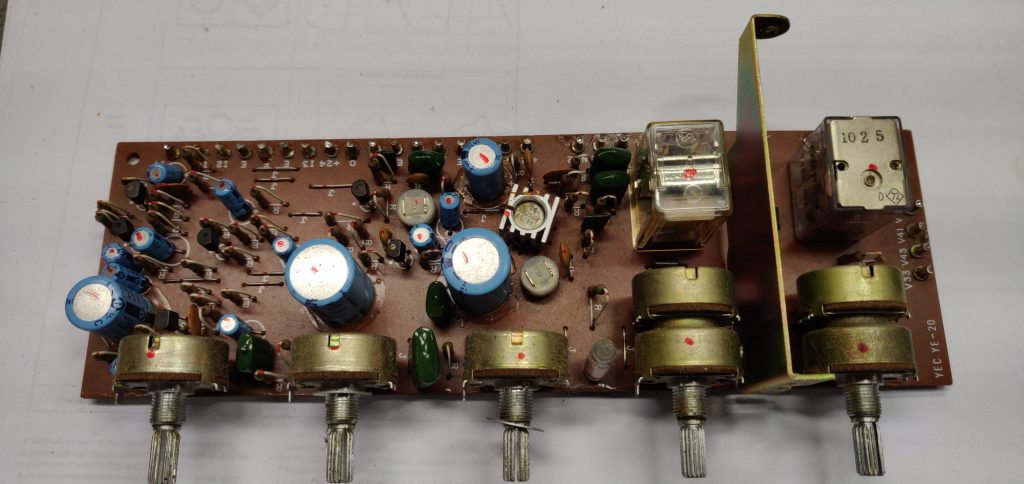
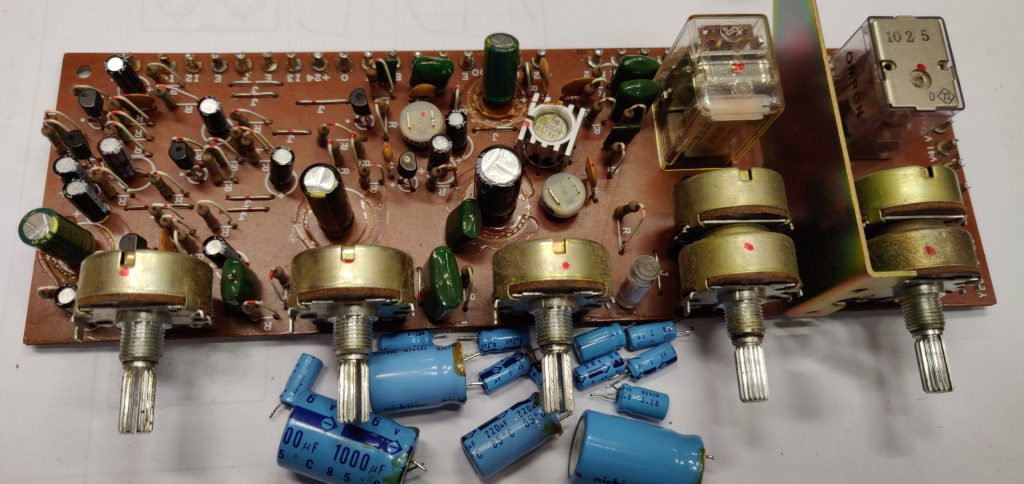
/Krister
Found the the time to recap the preamp for the Yamaha RA-100 published in an earlier post. Pictures before and after.


/Krister
These two arrived for repair.
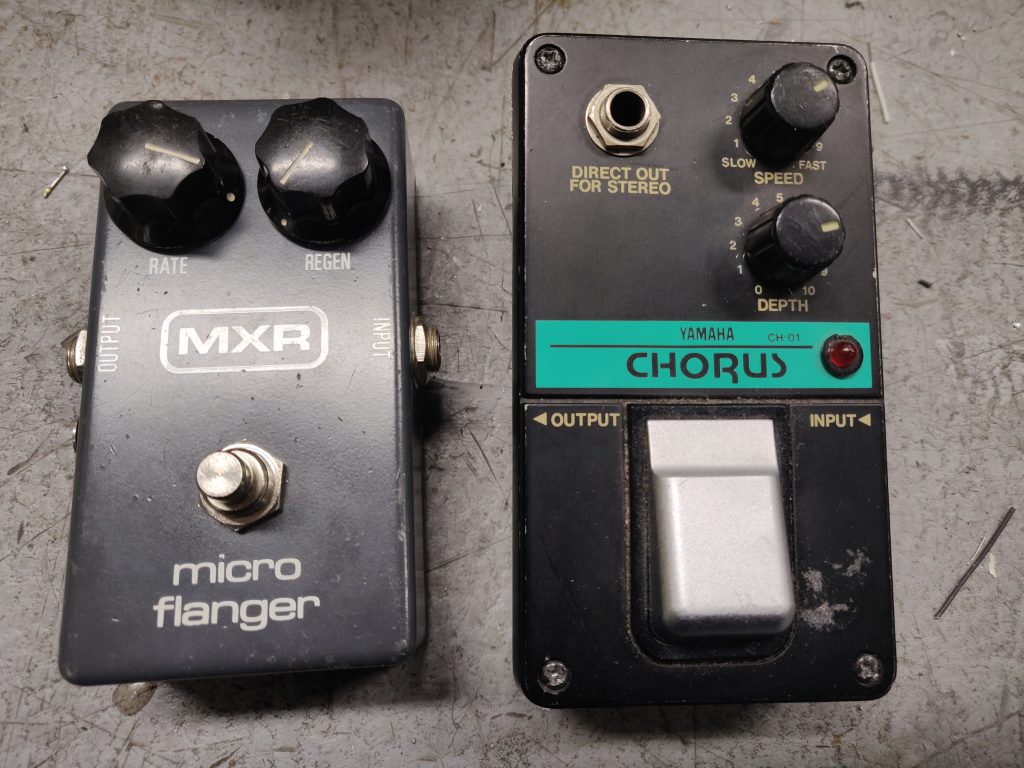
/Krister
Now here’s a rare pedal I got on the bench, a Colorsound Flanger.

However in a no working condition, Looking at the guts I’d say there’s some work to be done if it will ever work again.
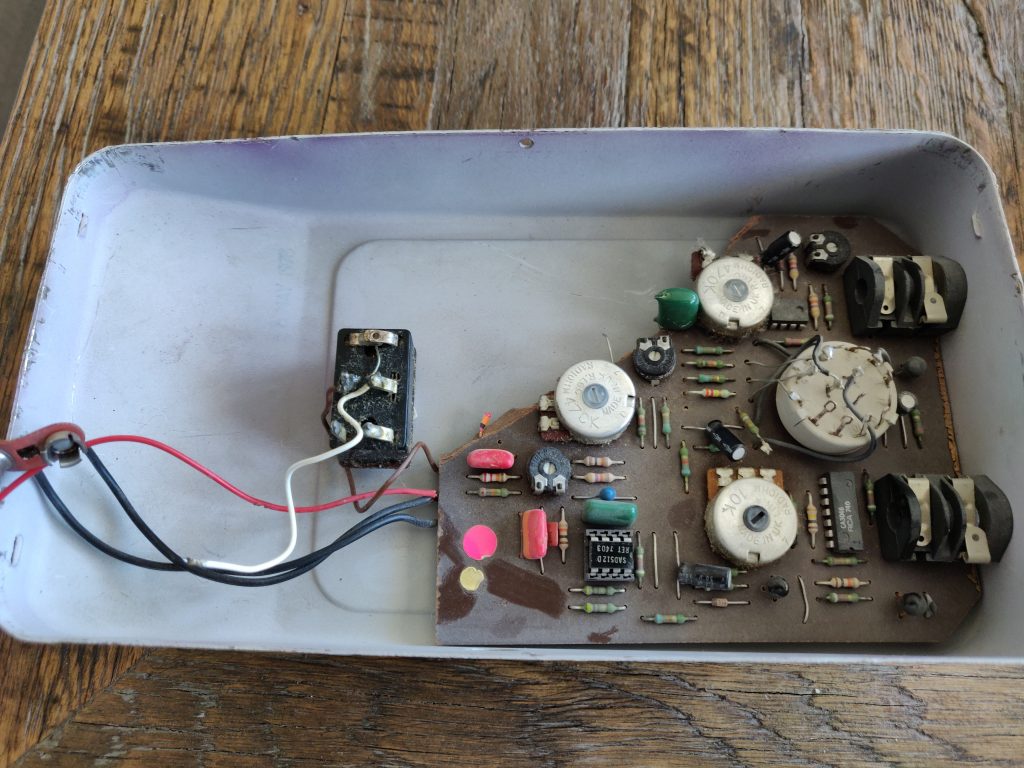
Beyond repair? Well normally I’d call it electronic junk but looking closer at the circuit board there’s is still one component that makes me want to give it a try, the rare Reticon SAD512D BBD IC.
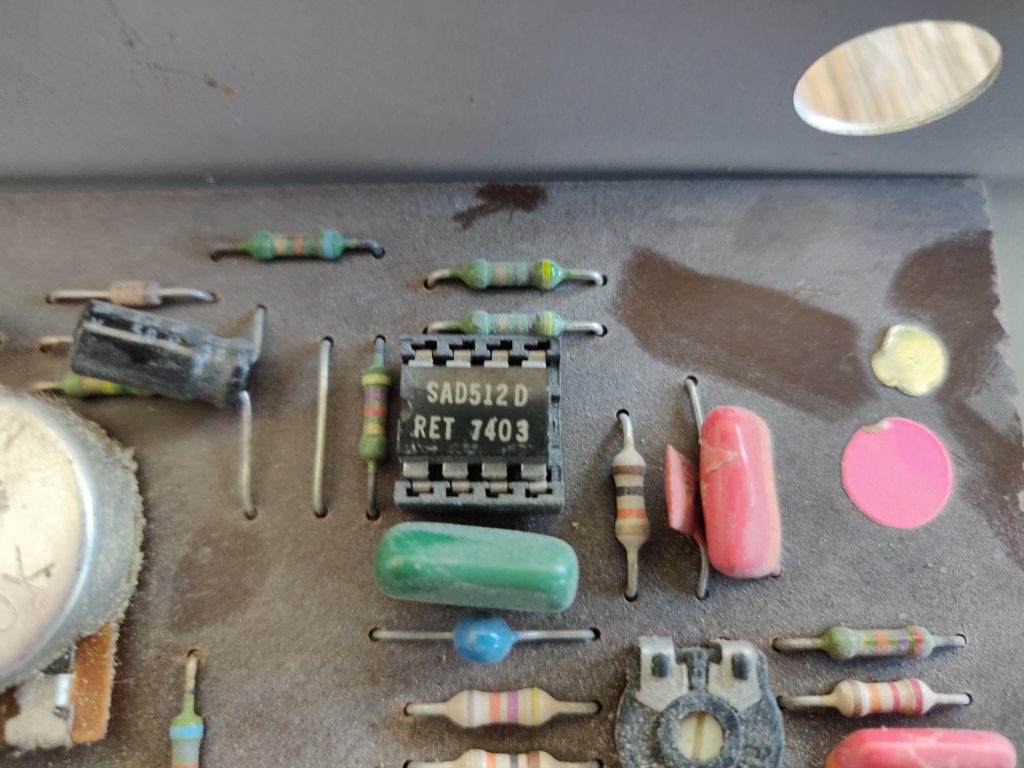
If anyone sits on a schematic for this pedal and like to share it with me I’d be very happy.
/Krister
Finally found the time to finish this phaser. Replaced the electrolytics, adjusted bias for the fets and it sounds as good as new. I really like the off board wiring done to it. Shielded wires for everything in the signal path.
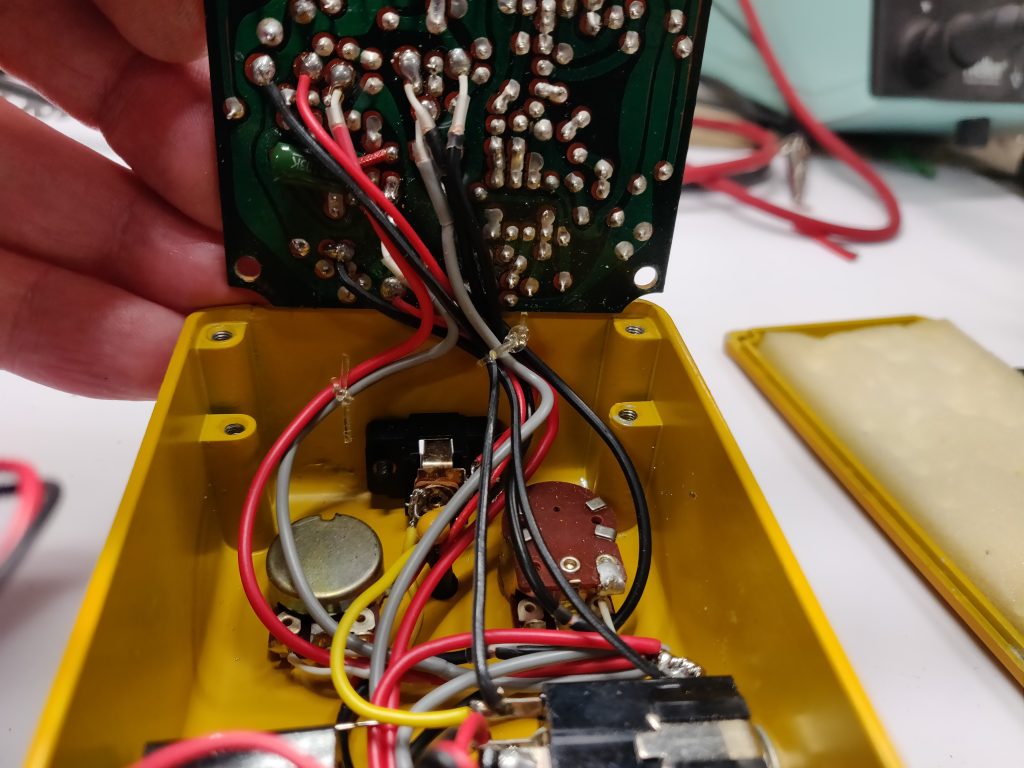
The opamps have sanded but they are all seem to be LM1458:s.
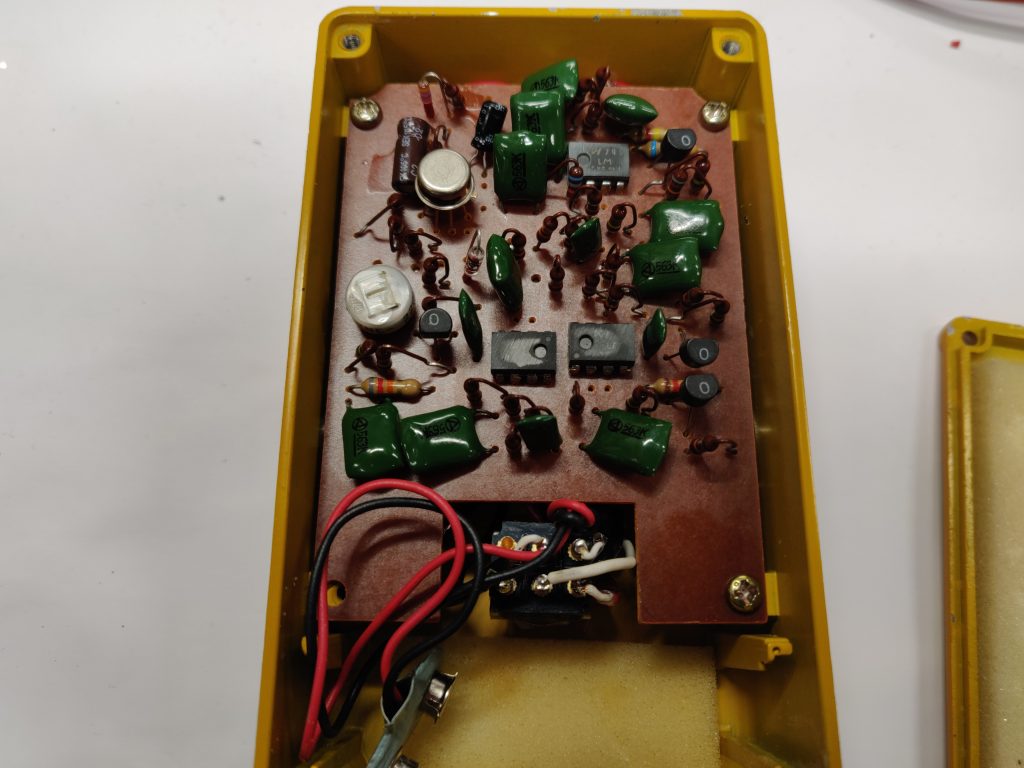
The bypass switch is a nice, non-clickinging type. Never encountered them before. It’s not wired for true bypass.
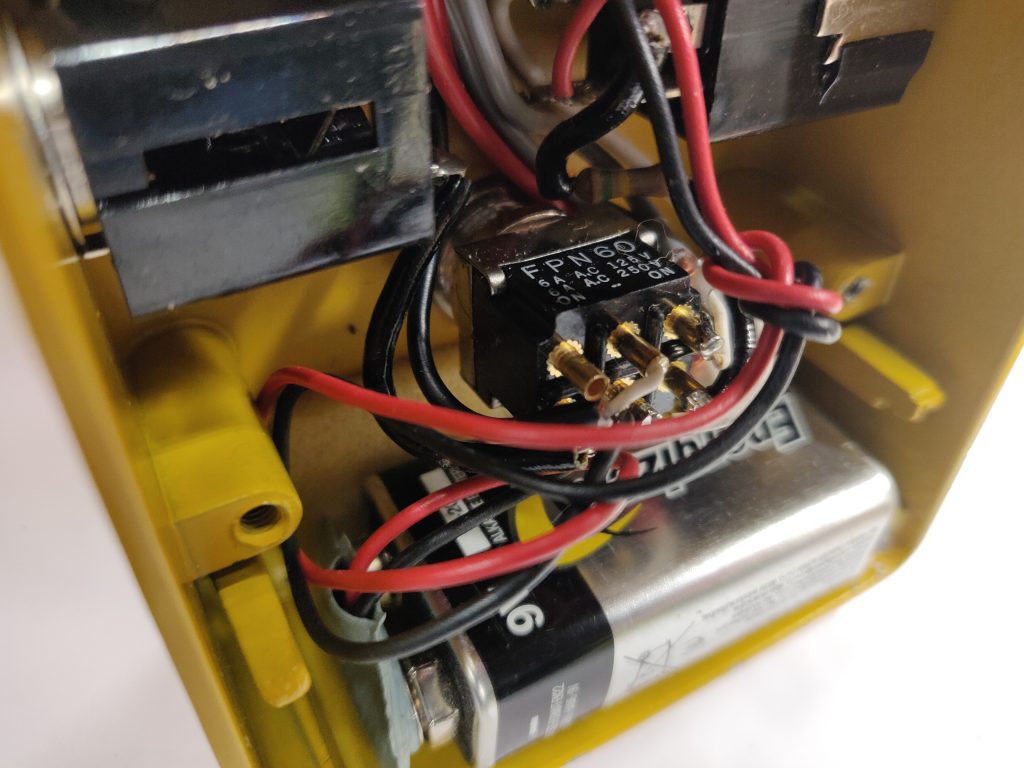
The pedal works of a 9VDC battery but also have a DC jack, though the circuit uses +/- 4,5VDC from the power source so it can’t be daisy chained.
/Krister
Pretty rare piece I got in for repair. An Univox Uni-tron 5, a clone on the famous Mu-Tron III.
Here’s what’s said about it by Mike Beigel (Musitronics co-founder & designer)
The “Uni-Tron 5” was a copy of the Mu-Tron III, sold by Unicord. It was a time when Japan was copying US designs. Unicord was the precursor to Korg. We at Mu-Tron approached the president of Unicord, who acknowledged their product infringed our patents, and paid us a royalty. However, they only made about 500 units total. I have one in my collection too. The circuitry is a direct copy of the Mu-Tron IIIcircuit diagram, though the units don’t always sound quite the same.
That’s the story, firsthand.
The pedal was in a no working condition, it had been modified and also attempts was made to repair it. Here’s a picture of the homemade power supply that came with it, two 9VDC adapters connected for a +/- 9VDC supply.
First thing I decided to remove all the modifications restoring it back to its original state, removing the power supply connector, the potentiometer inside the chassis and restoring the off board wiring. I guess the pot on the inside was an attempt to attenuate the volume boost.
I tried firing it up after restoring it back to its original but it did not do what it’s meant to. The filters kind of went on and off with no slope and only with the gain pot turned up way to high. I found that it was the precision rectifier opamp A5 (looking at the Mu-tron schematic) that was faulty and the envelope capacitor C8.
Here it is in its working state
Now, earlier in my post I quoted Mike Beigel from Musitronics, he said “The circuitry is a direct copy of the Mu-Tron IIIcircuit diagram” Let’s take a look at my findings.
The Mu-tron III used a dedicated opto electronic module seen in this picture with the A805 letters on it
Here’s the module in the Uni-Tron 5, it got its own module no markings on it.
Here’s a picture of the precision rectifier/led driver A5/A6, seen at the right of the transistor. Now that transistor is not to be found in the Mu-Tron III schematic.
Actually it’s a NPN emitter follower connected to the output of opamp A6 driving the opto electronic module. Here’s the schematic for it.
Other than that I’ve found no difference.
/Krister
Got hold of this old phaser in a no working contition.
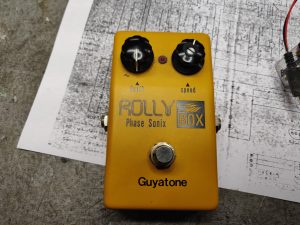
Tried to power it up but found that it’s short circuited. The problem was not located in the circuitboard, found that one of those blue old tantalum caps on the power inlet for the DC-jack was shorted.
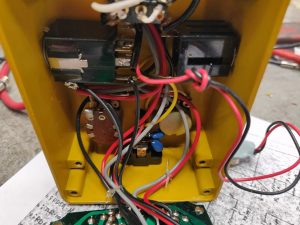
I had them replaced and yes! There’s phasing. However it seems that it’s in need some more tending to, it’s way to noisy. Lets see what a total recaping can do for that.
To be continued….
/Krister
Got a Yamaha RA-100 in for repair. A quite nice looking solidstate amp with the feature of two rotary speakers. It’s in a nice condition but it blows fuses in the poweramp amp.
Here’s a caption of the rotary speakers and the poweramp.
I ripped the poweramp out and after some measurements I found that the power trannys on side was blown, causing the fuses to blow. I replaced the power and drive trannys for both side and had the circuitboard recaped since some of the electrolytic capacitors was in a bad state.
Look at the size of an old electrolytic capacitor from the -70:s compared to a modern one with much higher voltage rating.
The circuitboard totally recaped with new power and drive transistors.
So it was finally time to hook everything up and fire it up. Here’s a video from the tryout.
I must say it was nice bringing this one back to life.
/Krister
Got on old Mu-tron III in for repair. It appears not to be tinkered with before. As I got it up I realized there’s some difference as compared to the schematics circulating the web. I found two caps that differs from the schematics. The 4,7uF capacitor in the drive section for the led is actually a 3,3uF in this unit.
The 15uF nonpolar cap at the output is 10uF.
Looking at the schematic you can see them where I made notes about values in red text.
Here’s a pic of the old lady
Turned out the rocker switches for range and drive did not work as they should. Some cleaning sorted that out.
/Krister
So I got an old Rozz R-5 Flanger on the workbench. It is in a no working condition. The outputjack was missing, the circuitboard is missing at least one diode and a transistor and some of the offboard wiring is loose. Seems like someone has tried to fix it but given up.
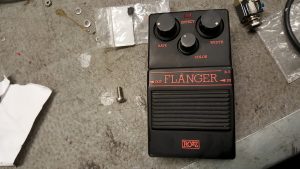
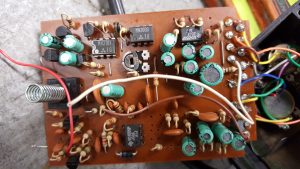
Did some search on the net but could not find a schematic for it but it seems identical to the Ampeg A-5 Flanger .
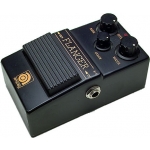
Searching on a schematic for the Ampeg Flanger did get me a schematic that seems correct.
The missing transistor was a 2SK30 for muting the Flanger effect, missing diode was connected to the gate of that transistor.So I got the offboard wiring reconnected and a replaced the missing components and fired it up. It just pass unmodulated signal. Measured the clock IC MN3101 with oscilloscope and found it did not send any clock frequency. Replaced it just to find that the BBD chip, a MN3006 was also broken. Replaced the BBD circuit and yes! There’s a flanging effect.
/Krister